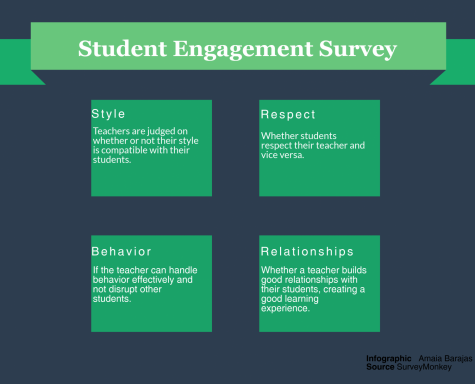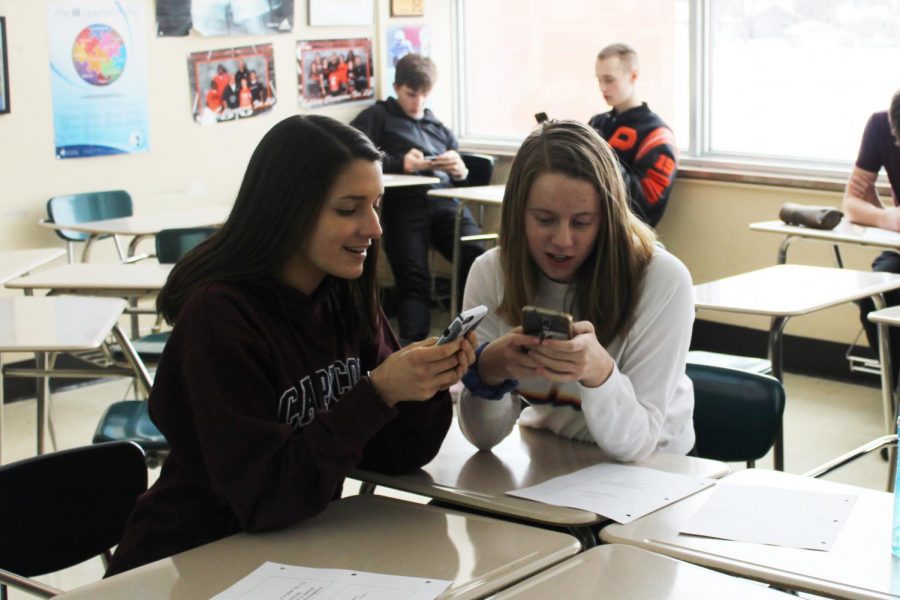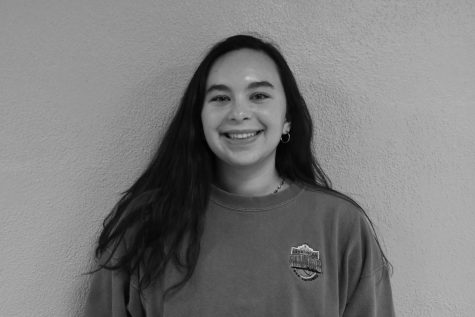Student Engagement surveys give teachers feedback
Questions in effort to reach students in the classroom
Juniors Lily Kulevsky and Claudia Stone take the Student Engagement Survey during their math class on Dec. 18. The Student Engagement Survey helps teachers learn how to improve different areas in the classroom.
December 23, 2017
As chemistry teacher Alex Polk reflects on the recent student engagement surveys the school gave to students, said he thinks the surveys give students more freedom to express how they feel in class.
“I’m pretty positive about them, I think it gives a little opportunity to get feedback. It gives students an opportunity to tell a little bit more how they feel,” Polk said. “Some people may not feel comfortable saying things and this gives them an opportunity to be honest, whether positive or negative.”
According to Park human resources director Richard Kreyer, the surveys are created using a specific database that is then gets organized for teachers to see their results.
“The surveys are done on a SurveyMonkey and they are collected by the district and teachers get a viewpoint document. They get to go into the document and see the survey results, they don’t get to see what any one student said, but they get to see all the responses from their class,” Kreyer said.
According to principal Scott Meyers, the school started the student engagement surveys when Minnesota wanted schools to focus on students opinions.
“The technical answer is a few years back when the state had changed the teacher evaluation system, one of the components was including student voice,” Meyers said. “The student feedback is a component for teachers to get input from students, and then they reflect on it. Then that reflection is part of what comes to the teacher development evaluation system.”
Meyers said the student evaluation surveys are used to make sure students have a say in the classroom and help improve teacher performances.

“The hope is that through student voice we get a little feedback from the classroom and teachers can use that to monitor or adjust how things are going in the classroom,” Meyers said
Freshman Courtney Hanson said she thinks the surveys are good for students and teachers, but they shouldn’t be the main way of evaluating a teacher in the classroom.
“I think it’s important to make sure students are learning in a way that’s best for them, so whether that’s visual or textile, however, they learn. But they shouldn’t have all the say how teachers teach,” Hanson said.
According to Meyers, data from the surveys aren’t delivered to him right away, but he eventually gets to see the results.
“They go directly to the district office, and then we get portions of that back to include in the development and evaluation system,” Meyers said. “They’re not handed directly to me, but we get to see the reflection part of it.”
Polk thinks the surveys given to students is a good way to reflect and improve his teaching skills.
“Maybe you think you’re doing well and reaching the whole class but, the
n, even if you’re being as reflective as possible in your teaching methods. There’s those kids that you’re maybe not getting,” Polk said. “Just having a more concrete aspect of how you can do better.”
Junior Maranda Hoogenraad said the Stud
ent Engagement surveys are a good way for teachers to be informed about their students learning tendencies.
“I think letting teachers know what’s w
orking for students and what isn’t can help them fix their teaching styles so more students can learn,” Hoogenraad said









